
06 November 2020
Although Algeria’s urban space is governed by gender norms, women are certainly present and their use of public space is constantly evolving. Far from the clichés that confine them to the domestic sphere, their use of the city is complex: constantly balancing the need to conform to a strong patriarchal order and the desire to enjoy an increasingly assertive sense of freedom. Women occupy the city on a daily basis following unspoken and often invisible rules. In a constant quest for freedom, many of them implement avoidance strategies and spatial appropriation mechanisms that, while conforming to societal expectations, also subvert them. Step by step, from inside the home all the way to the city center, adapting their identity to the changing norms of where they go, they manage to access the city, sometimes without questioning the social codes and sometimes by challenging them.
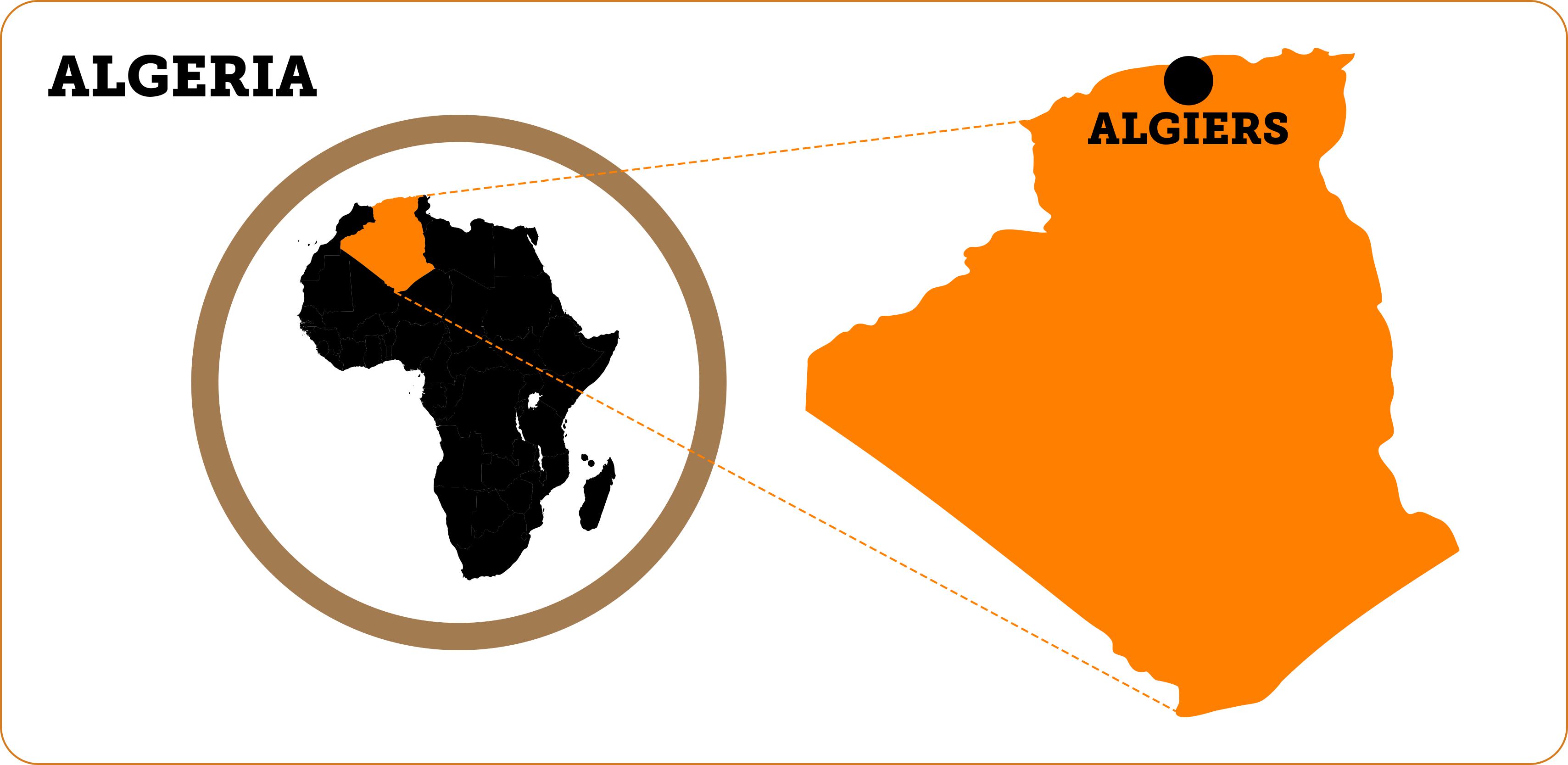
See the Artistic Lab : Women’s mobility at play in the theatre of Algiers, by the sociologist Khadidja Boussaïd and the photographer Khadidja Markemal.
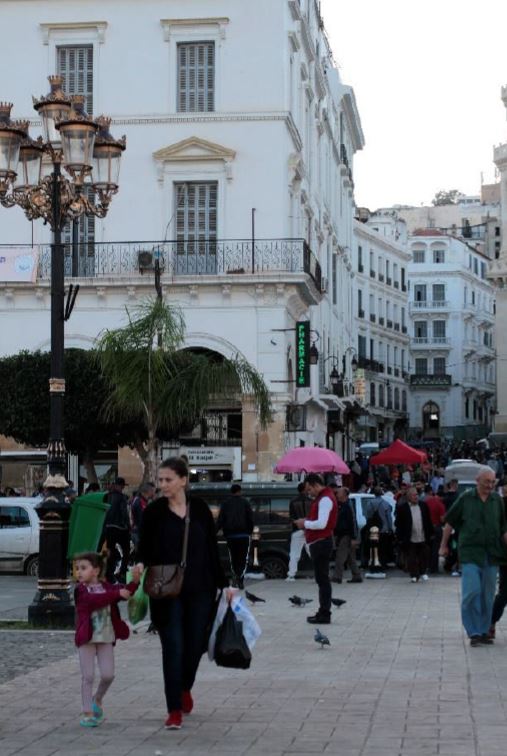
The issue of women’s mobility in Algerian cities and especially the evolution of their relationship to public spaces has so far not been the focus of much attention among researchers in urban studies.There are several reasons for this shortcoming: first, there are sociological and cultural barriers connected to the status of women in traditional North African societies; then the unconscious sidestepping of gender in the specialized international literature, that turned urban agents into generic, gender-neutral users of the city; and last but not least, until very recently at least, the unrivaled domination of men in the production of scientific knowledge relating to urban studies.
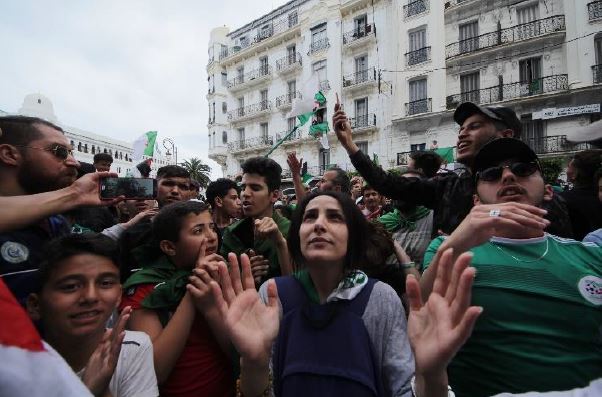
The research on which this article is based was developed prior to the political protest movement of February 22, 2019 known as Hirak. It allows us to understand the deep significance of these social upheavals in how the women of Algiers relate to the public space both as a place to liberate democratic speech and as a space for people to move, circulate and travel.
Until Aline Delatte’s survey 1 published in 2018, “little was known about mobility trends in the MENA 2 region, let alone women’s travel habits, with data rarely broken down by gender.” 3 Yet gender is an internationally recognized factor that affects mobility, as well as age, professional status and other socioeconomic factors. 4
This gender-based constraint on travel is even more apparent in MENA countries, with notable nuances between the countries of North Africa and those of the Middle East. A particularly telling indicator can be found in Aline Delatte’s analysis of public transport systems in these countries. Beyond the inadequate transport options and their impact on women, the attitudes of female users towards the creation (or lack of creation) of women-only public transport services appear to reflect whether or not there is a demand for inclusion in the public space. A public space, by definition, is a place of diversity, where men and women can “mix.” Consequently, this analysis of women’s expectations in terms of diversity can reveal to what extent they accept a form of urban sub-citizenship.
The views of the women interviewed in Aline Delatte’s study fall into three categories: A pro-separation attitude, which includes the women of Muscat and, paradoxically, of Beirut; a generational attitude towards separation in Amman, where older women consider the reserved spaces in transport to be secure; and a rejection of separation, present in Casablanca and Algiers, where “women warn of the long-term negative impacts that developing women-only transport solutions could have on their social inclusion.” 5 It therefore appears that, despite the problems of sexual harassment experienced on public transport, the surveyed women in the North African Maghreb countries consider that access to these closed but mobile public spaces is a factor of equality, if not parity, in the consumption of the public space. 6
However, the studies carried out in the city of Algiers emphasize the considerable weight of cultural constraints in accessing the city: the Zanqa, the street, is a space for men, 7 as opposed to the Horma, the indoors, the intimate space reserved for women. 8 As Bourdieu points out to the extent that there is “a corporeity of the masculine and the feminine governed by two movements, that of the inside and that of the outside,” the whole question boils down to the “crossing of thresholds that separate the inside from the outside, 9” that is, the home from the city, the women from the men.
These thresholds are essentially “virtual thresholds that draw the boundaries between the private space (the inside, the intimate) and the public space (the outside, the diversity)” that govern women’s movements. 10 The work carried out on these issues emphasizes the flexibility of the Horma which defines the spaces in which women are allowed to evolve. Kaddour Zouilai explains that if the house is the main place of intimacy and inviolability, illustrating his point with the Algerian adage that “a house without skiffa 11 is a naked woman,” then “the neighborhood can also become, in some sense, an intimate space, a ‘village within the city,’ and by the same token, although less strongly than the house, a sacred one too.” He adds that “it would be no exaggeration to say that defending it can lead to a police-like level of inquisition,” underlining the role of the Ouled el Houma (neighborhood kids) in surveillance. 12 Women are thus constantly in a position where they have to negotiate their crossing of interlocked thresholds - that of the home, of the street, of the neighborhood, etc. - which require the use of symbolic resources and different behaviors.
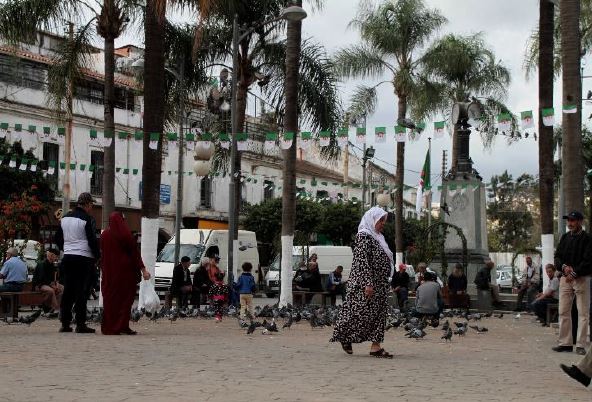
Women’s mobility potential, also known as motility, 13 in the context of Algiers is an ongoing process of strengthening their mobility potential through the use - and often the subversion - of various modes of action, material devices (such as clothing) and immaterial resources (such as social networks) to construct their mobile modernity all the while formally respecting the imperative injunctions of tradition. This tradition is especially embodied by “controllers,” that is the men to whom the women “belong” through kinship or marriage (husband, father, cousin, son...) and who exercise permanent control over them, as well as the Ouled el Houma (neighborhood kids) who exercise what we might term more local, neighborhood surveillance.
In her thesis, Khadidja Boussaïd looked at the differences in mobility between men and women living in Algiers, particularly in terms of their respective relationships to space. She observes that on the one hand there is a local mobility for men, characterized by the appropriation of the neighborhood seen as a place of identity and community (the Houma), with a strong attachment to the home as a place of socialization. On the other hand, she notes that women expect the city to offer them “anonymity and the construction of a more expressive and liberated identity.” 14 While there is a wealth of grey literature on the relocation of the poor people of Algiers and on the new towns of Sidi Abdallah (Algiers) and Ali Mendjeli (Constantine), highlighting the processes of “male” territorialization in the new neighborhoods, Khadidja Boussaïd’s work shows how new collective housing estates work differently depending on gender: for women, they are places of transit where pathways are precise and clearly visible, while for young men they are places of permanent occupation, day and night.
Her research uncovers the existence of an unexpected effect: women are relocating their social habits outside their neighborhoods of residence. By shopping outside the neighborhood, for example, they enjoy the anonymity of the new shopping centers, which are attractive because they are both safer and removed from the surveillance of the Ouled El Houma.
For women, it is primarily a matter of negotiating their movement from the domestic space to the public space, and this negotiation takes place mainly within the family. Women are far more trapped within their homes than men, who have the whole city as a theatre of action and whose sociability is made up of strong bonds (close friends) as well as weak bonds (simple acquaintances). 15 The women of Algiers are looking for an urban identity that runs counter to the norm that encloses them in the private space or near the residence, in order to enjoy and leverage networks outside their residential neighborhoods, just like men. While these “de-spatialized” networks, which operate outside the neighborhoods of residence, are accessible in a virtual way to certain categories of women - especially single women through social media - physical networks are still a privilege only enjoyed by men. What the women in the Maghreb countries want, therefore, is more “sharing of the space and social mixing, that sometimes increases and declines, showing that spatial inequalities persist between genders.” 16
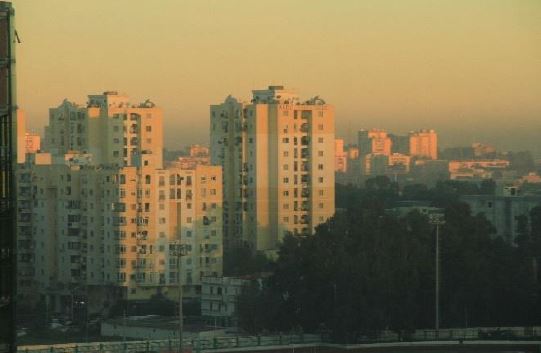
Maroua Kennouche (who works on rehousing estates 17) points out that this movement towards the city causes women to slowly gain and occupy bits of the already limited public space conceded to them in these new estates, such as around primary schools and shopping centers. They manage to do this by leveraging the legitimacy they have with their care functions (accompanying children, maintaining the home, etc.). In interviews conducted by Maroua Kennouche in a suburb of Algiers, the term “desert” is used to describe this type of new neighborhood, experienced by many inhabitants as “ghettos” that lack any sense of urban meaning. In these “soulless places,” those who mobilize material and virtual resources to escape from their estate-prison view it as an act of liberation and a way of accessing urban citizenship.
The various studies on the subject reveal just how complex women’s strategies are. 18 Insofar as they perceive their own visibility as that of a moving body whose presence is more or less “legitimate and legitimized,” 19 these strategies are intended to give society in general, or what they see as representing it (their particular controllers), the guarantees that they are making a legitimate use of their freedom of movement, while often implementing some form of subversion, i.e. diverting the means and resources offered by society. Samia Bentoudert studied these strategies among the women of Algiers who constantly feel this need for legitimation. 20 She identified five:
Motorization: “Using cars allows women to be more present in the public space and to consume more of the services the city has to offer.” As some interviews confirmed, this choice to have a car can be explained by the tendency of some social circles to “distance themselves from the crowd,” to get away from the promiscuity of public transport (mainly private buses) – if and when, of course, a household’s socioeconomic conditions allow it. 21 It is often a choice that is also made by the “controllers”: fathers, brothers or husbands finance the purchase of a vehicle and take extreme care of it. Samia Bentoudert notes that for the controllers, if the woman drives, she is allowed to go out as long as she doesn’t hang around men. The car prevents her from being physically in contact with others on public transport and, according to her controllers, it keeps her out of sight. In this sense, the car becomes a sort of metal hidjeb (veil), encasing and protecting the woman’s Horma (in the sense of honor).
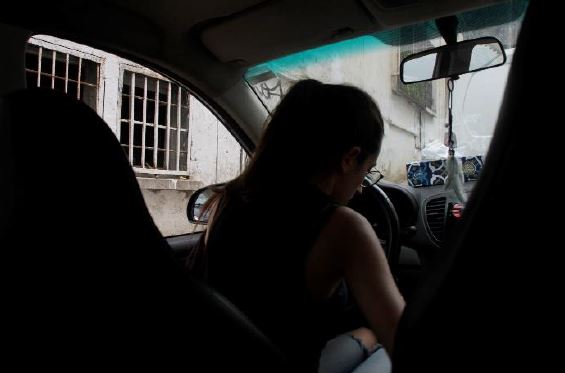
Clothing choices: This is mainly about wearing the veil (hidjeb) as a facilitator for accessing the male-dominated public space. Samia Bentoudert compares the hidjeb to a “combat outfit” meant to deflect people’s attention and reassure the controllers. Here again, interviews show that this is not a strictly feminine choice: the decision to wear the veil is often imposed by the controller. With this in mind, “the less attractive a woman is, the greater her chances of entering the public space; the wider and darker the hidjeb, the more a woman goes unnoticed.” Obliterating the body, hiding it, reducing it to a walking abstraction - this seems to be the purpose of the veil.
New communication technologies: Mobile phones have become an essential mobility resource, but they also allow men to remotely monitor women’s daily mobility. Phones have become the immaterial thread allowing a controller to never lose track of his sister, wife or daughter when she goes out into town. This is why a woman “ostensibly takes her phone with her, to reassure her controllers and show them that she can be reached at any time [...]. A woman must always pick up if she is called and give her position, otherwise her controllers will prohibit her from going out again.” As such, phones remain a way to push the thresholds back and keep the controllers at bay.
Sending a male companion: To the extent that a woman is prohibited from going out in the city alone without a good reason, she may be obliged to be accompanied by a legitimate companion (child, neighbor, cousin, etc.) who plays the role of “delegate controller.” His purpose is to watch her and report back that she has nothing to hide, in order to “reassure her controllers and preserve that right which they consider a privilege.” Here again, the decision to send a companion is one made by negotiation within the framework of the family.
Permission to go out: Women’s formal and regulated submission to the controllers’ authority is often performed in their requirement to duly and explicitly ask for “permission to go out,” especially when they don’t have any particular reason to do so such as accompanying children to school or going to work. This is all part of the unspoken code of Horma, according to which a “girl from a good family” has no business hanging about outside, especially if she has not received explicit approval from a controller.

These strategies and practical techniques employed by women in their daily lives are part of a more general evolution of the traditional status of women, which combines traditional postures and the conquest of new spaces. Khadidja Boussaïd identifies several social levers and mental arrangements that enable the implementation of new mobility practices.
Empowerment: Autonomy depends mainly on education and academic level, and therefore on one’s prospects of entering the labor market, whether formally or informally. It is mainly a question of accessing the financial resources that help with mobility of any kind, but also of justifying one’s presence in the city. In Algiers and its periphery, most women are professionally active and contribute greatly to household finances. This has helped their empowerment in recent decades, as evidenced in particular by the development of a number of third places (cafés, restaurants, entertainment venues, etc.) aimed at a growing female clientele.
Age-related asexualization: Young girls who have not yet reached puberty and older women are considered asexual, but they contribute to social diversity. For both, the body is not yet/anymore a source of control or conflict, but their presence impacts the general atmosphere, insofar as it absorbs some of the anxiety factors in certain public spaces.
Care: Thought of as an extension of household activities out into to the public space, the functions of care and accompaniment are eminently gendered. They allow a strong and justified presence of women in certain places such as schools.
Relational capital: Social relations that are formed in terms of networks (family, friends, professional, associative...) can become a resource for women to acquire more freedom as well as opportunities to move (they allow them for example to share a car). This relational capital tends to match the one traditionally reserved for men, i.e. a non-virtual network of strong and weak links, through the empowerment and capture of the city and third places by women.
Temporality, especially religious: Certain periods of social time are sacred and offer special opportunities to occupy places and be mobile. During the month of Ramadan, for example, temporalities and spatialities are different, especially among women who invade the public space at night for the Taraouih prayer. The freedom gained during this particular temporality by young women around mosques is justified by religious practice but enables all kinds of socializing moments.
Contrary to what some convenient clichés suggest, mainly due to a lack of attention to the agents’ daily practices, the relationship of Algerian women to the public space has evolved and continues to evolve, providing a different perspective and other less male-centered explanations to the relationship between men and women in Algiers.
In this vein, for many women, taking an active part in the 2019 Hirak was indeed an exceptional moment in time, but it was the extension of a process that was already there and activated in their daily lives. 22The first analyses of that exceptional episode in Algerian political life showed that it was above all an urban phenomenon, and that it presented Algerian women with a great opportunity to mobilize their strategies to conquer their own citizenship as mobile agents. While it represents a kind of culmination in terms of mobilization, this “Movement” only exposed into broad daylight other more modest and hidden movements, those relating to everyday life in which women deploy wonders of creativity and innovation.
The relationship of Algerian women to public space must therefore be read and analyzed as the result of a profound movement to renew the conception of gender relations in Algerian society. What is clear, however, is not the disappearance of limits and thresholds - material or immaterial - that define the inclusion of women in the city and continue to function as referents, but that the place of women in the city is always negotiated exclusively among those who “hold rights over women,” within the most basic domestic sphere: the family, nuclear or extended.
It is therefore necessary to temper somewhat the optimism shown in the heat of the moment by some observers of the Hirak, who see it as evidence of a revolution in the social practices of Algeria today. Without denying the exceptionally liberating nature for women of the weekly marches and demonstrations, it should not be forgotten that, while the crowd now affords women much more autonomy than it did in the past, in most cases, their “controllers” are never far away.
1 See the study directed by Aline Delatte, 2018: Report. "User-oriented public transport: a research project of Mena Centre For Transport Excellence, UITP, Dubai, April 30, 2018, 82 pp. and the article that comes from it: A. Delatte, T. Baouni, R. Belwal, L. Daou, D. Gourram, R. Imam, M. Safar Zitoun, A. Smadi., 2018: "Understanding the needs of MENA public transport customers: culture of service and gender-responsive recommendations," TeMA, Journal of Land Use Mobility and Environment. Special issue 1.2018: Urban Travel Behavior in the Middle East and North Africa, p. 7-31.
2 Middle East and North Africa.
3 World Bank, 2011a, Delatte, 2018a.
4 Mary Crass; Null -Rubnitz, 2018; Etc.
5 Delatte, 2018a, p. 51
6 Delatte, 2018a, p. 82.
7 The term Zanqa (the street) translates this pejorative connotation into the Algerian vernacular.
8 The Horma refers on one hand to the home, which is meant for the women, and on the other to the modesty and respectability of women, thus closely linking the inside of the female body to that of the home.
9 Samia Bentoudert, 2019.
10 Samia Bentoudert, 2019.
11 The skiffa is a vestibule just behind the main front door protecting the inside from outside gazes.
12 Zouilai, 1990.
13 That is, their mobility potential. See https://en.forumviesmobiles.org/marks/motility-461
14 Jacqueline Coutras, “Territoires du quotidien et espaces sexuées, du voisinage résidentiel aux espaces d’anonymat,” Strates, No. 14, 2008, p. 3-4.
15 On this, see Mark Granovetter, 1973.
16 Boussaïd, 2019.
17 Kennouche, 2019.
18 See the PhD theses by Khadidja Boussaïd and Samia Bentoudert cited in the bibliography, as well as Anne Jarrigeon's videos, "Être une femme dans la ville, ou l’art de l’esquive” (“Being a woman in the city, or the art of dodging") https://en.forumviesmobiles.org/video/2019/06/18/being-woman-city-or-art-avoidance-12988 ; “La mobilité des femmes, une liberté contrariée” ("Women's mobility, a constrained freedom") https://en.forumviesmobiles.org/video/2019/04/23/mobility-women-constrained-freedom-12941 ; “Le poids du quotidien : les femmes face à la mobilité” (“The weight of daily life: women facing mobility") https://en.forumviesmobiles.org/video/2019/04/23/weight-daily-life-women-facing-mobility-12942
19 Laqueur, 1992.
20 Survey by semi-structured interviews conducted with a group of thirty women from the suburban town of Draria, chosen according to their age, activity, marital status and mobility resources.
21 The 2008 census shows the hyper-motorization of households living in the capital’s upscale districts, although they are also the least well served by public transport.
22 Fabbiano, 2019 ; Djelloul, 2019.
For the Mobile Lives Forum, mobility is understood as the process of how individuals travel across distances in order to deploy through time and space the activities that make up their lifestyles. These travel practices are embedded in socio-technical systems, produced by transport and communication industries and techniques, and by normative discourses on these practices, with considerable social, environmental and spatial impacts.
En savoir plus xMovement is the crossing of space by people, objects, capital, ideas and other information. It is either oriented, and therefore occurs between an origin and one or more destinations, or it is more akin to the idea of simply wandering, with no real origin or destination.
En savoir plus xMobilization is the action by which individuals are called upon to gather in the public space for a concerted effort, be it to express or defend a common cause or to participate in an event. In this respect, it is a social phenomenon appertaining to mobility. This article has been written by Sylvie Landriève, Dominic Villeneuve, Vincent Kaufmann and Christophe Gay.
En savoir plus x
Southern Diaries by Forum Vies Mobiles are licensed under a Creative Commons Attribution-NonCommercial-ShareAlike 3.0 France License.
Permissions beyond the scope of this license may be available at contact.
Other publications